 |
SRGC Bulb Log Diary |
| Home Recommend This Site To A Friend |
|
BULB LOG 40 3rd October 2003
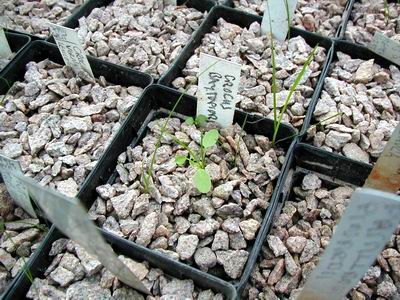
Weeds in pots As we do not sterilise the loam that we use in our compost we always get weeds appearing in the pots. These weeds act as an indicator to me that there is still sufficient moisture in the compost from the 'September storm', (that is my excuse and I am sticking to it). I weeded these pots today as I do not like to let them get too big and I like to get them out before the 'October storm'. 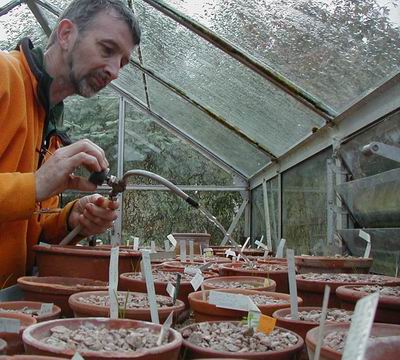
October storm Yes, today is the first of October, it is time for the second great Autumn storm in our bulb houses. Before I start to water I like to rake around the sand plunge between the clay pots to break up the surface which can become quite hard after the moisture from the first watering has dried, this hard surface could prevent the water penetrating the plunge efficiently. 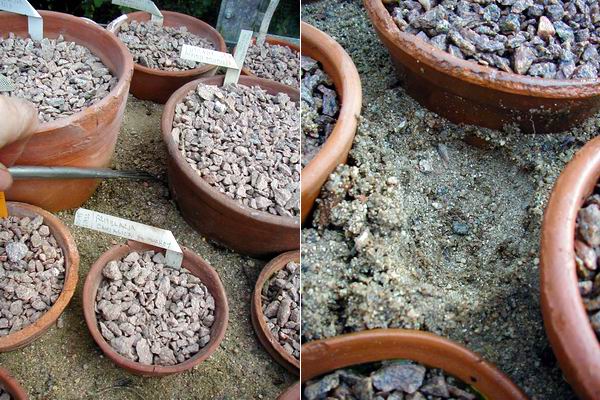
Break the surface On the right is an area that was watered without raking the surface and the moisture has hardly penetrated more than a centimeter down into the sand plunge. Then it is just as I described for the September storm flooding each pot in turn, once I have been round all the pots the first ones to be watered have drained so I start again. I like to see bubbles coming to the surface this is a good indicator that the water is fully soaking all the compost in the pot. 
Flood till bubbles rise Once I have been round the pots twice I then water the sand between the pots so that the plunge is also evenly moist all the way through. 
Bulb house The method is similar for the square plastic pots except that you do not have any exposed sand to harden so I just go around watering each pot until it floods and like I did with the clay pots repeat this so all the pots have been watered twice. That is the last time I will apply a storm. Each pot will now be given personal attention and watered in proportion to the amount of leaf showing. I will continue to update you on watering the bulbs in future logs. 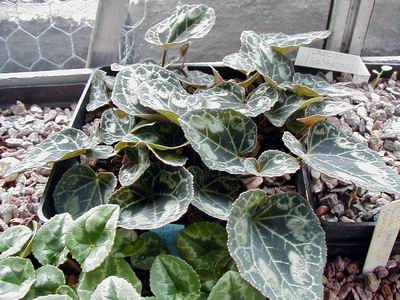
Cyclamen graecum Cyclamen graecum is one that is requiring regular watering as it is in full growth now and it has a lot of leaves to support. We do not do very well with Cyclamen graecum because I believe that it is not warm enough for it here in Northern Scotland, we had given most of them away to good homes further South. However one November about four or five years ago I found a box in the corner of a local garden centre (pushed aside for all the Christmas decorations) it contained some large dried cyclamen tubers so I got a couple to see if I could get them back to life. It has taken a number of years but they are now displaying a good number of growth points which has produced this fine set of leaves. I hope that I will get a few flowers next year, if not these may also find their way south. 
Sternbergia sicula A close up picture of the beautiful Sternbergia sicula that I showed you in last weeks log. 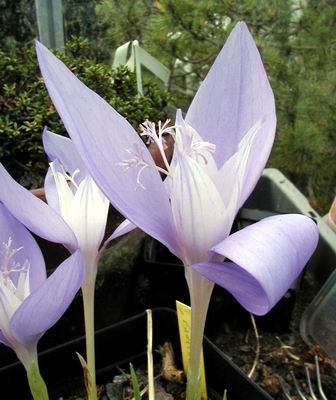
Crocus banaticus The first of our Crocus banaticus is now in flower, we have masses of this wonderful crocus mostly raised from our own seed and we will have them in flower from now until December when the last ones usually come into flower. 
Colchicum autumnale album In the garden the colchicums continue to perform, providing colour and interest attracting not only these gardeners but a mass of flying insects like hover flies and butterflies. Even though it does not have the largest of flowers and it is quite tall I have a soft spot for Colchicum autumnale album. 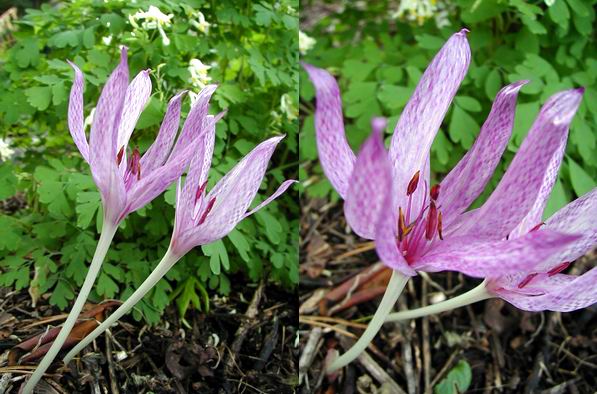
Colchicum variegatum We got this one as Colchicum variegatum but I am not convinced that it is named correctly, I cannot see any difference between this and the C. agrippinum that we grow, it is lovely what ever it is. To finish off this weeks log, this is a colchicum that I cannot decide if I love it or hate it. It is a terrible mutation of a flower but it has that appealing way of just about winning me over. The one good thing that I can say about it is that because the multiple petals hold it off the ground it can still look good for several days even when it falls over. 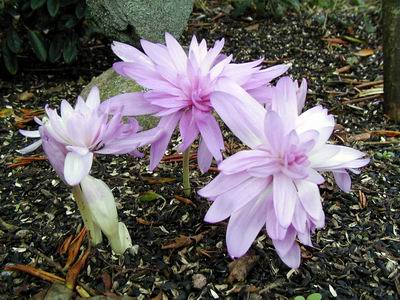
Colchicum 'waterlily' ^ back to the top ^ |